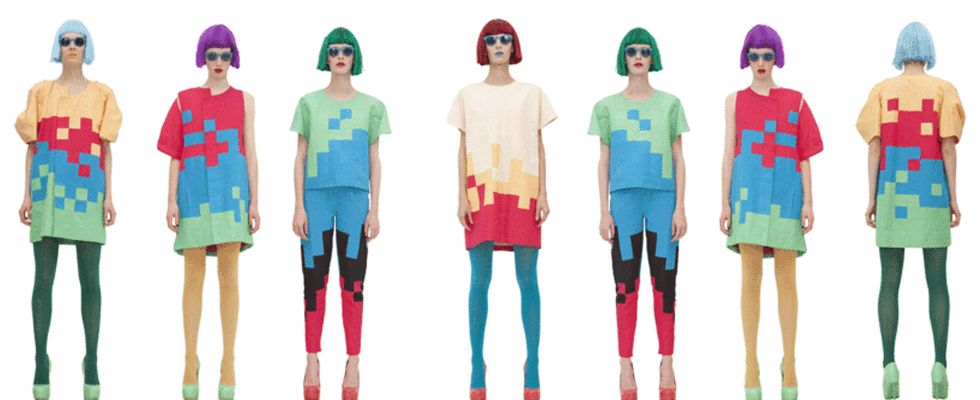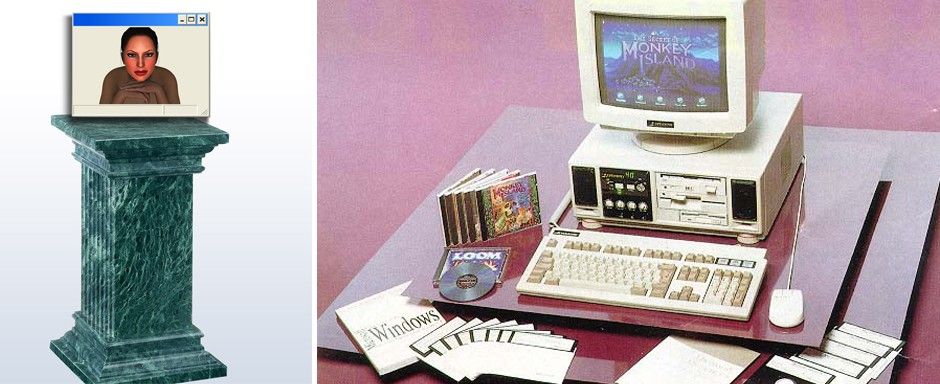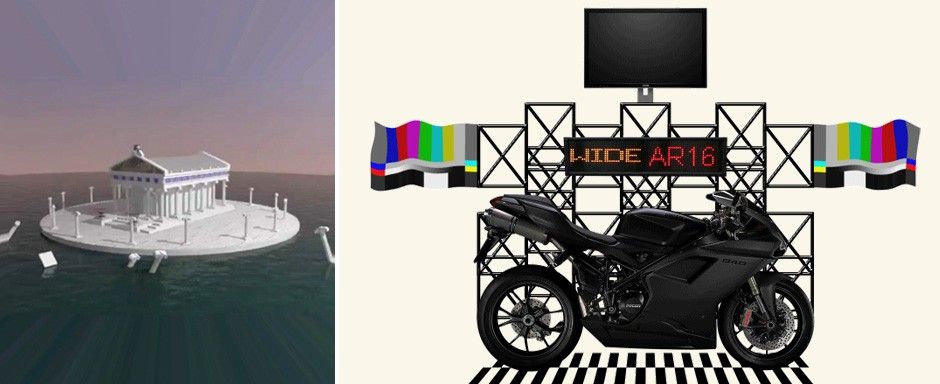Dial-up Design
In response to today’s clean and crisp web design, and with a hint of nineties nostalgia, a growing niche of young people are celebrating the look and feel of the early Web. Animated GIFs, clunky web

On the whole, today’s internet is aesthetically pleasing. Website layouts are generally clean and clear. Video content is often professionally shot. And platforms such as Pinterest and Tumblr have spurred on a web culture of sharing beautiful visuals. It seems we’ve come a long way from the early days of the internet, with all its clunky graphics and ugly layouts. Or have we?
Partly inspired by early internet nostalgia – and partly in response to the modern online aesthetic – a growing niche of people are celebrating the quirks, themes and imperfections of Web 1.0. They’re harking back to the nineties’ web, and reminiscing about an internet before the days of social media, mobile apps and live streaming.
"It's all about 1.0 aesthetics"
For many of these early-web revivalists, the movement is about exploring the old internet aesthetic. Blogs such as Gold Card, Vanilla Shapes and Wet Dik have curated streams of early internet relics, with overly-colourful graphics, nineties style fonts and images of primitive virtual worlds.
Contemporary graphic design has been inspired too. Daniel Swan, a London-based designer who produces visual communication for London art collective Lucky PDF, is pioneering a jarring, colourful aesthetic that draws heavily on early internet styles – but exaggerating it further, making it look like it was born from eighties post-modernism. He recently used the style in an identity for Lucky PDF TV, a live television project at the last Frieze Art Fair.
Other designers are incorporating the iconic glitches of primitive computer interfaces, despite having advanced internet tools and software solutions such as HTML5. It can be seen in the work of Jon Satrom, a pioneer of the movement, whose glitch experiments can be found on his equally abrasive looking blog. Kim Asendorf, another artist from Germany, has an equally deliberately unappealing website that looks like it was made in the mid-nineties. Glitch artist Nick Briz recently took the movement to mobile phones with an iPhone video game called Duck Feedom, inspired by the old 8-bit Nintendo NES. There’s now even an annual festival in Chicago called GLI.TC/H that celebrates the movement.

Aesthetically, the GIF worked for us because it was a glitchy 8-bit reminder of the excitement we had when we first began using the web as children. GIF Revival
Another part of the Web 1.0 revival – and perhaps the most prevalent – is today’s animated GIF culture, a celebration of the early internet phenomena that lets people produce short films within a single image file. The medium first appeared in the 1990s as a way to create simple, low-file size animations. It then evolved into a way to share internet memes (lolcats, anyone?). More recently, however, it has transformed into a rich online visual medium.

You only have to look at the rise of GIFs on Tumblr. Just about everything has been animated, from famous movie scenes (If We Don’t, Remember Me) to cats (Fuck Yeah Cat Gifs!). In response, Protein even hosted its own exhibition inspired by the format late last year at our 18 Hewett Street gallery space. Called Animate Everything, the show saw artists such as Parra and Colin Henderson create bespoke GIF art, displaying it on old television monitors heaped in a pile. According to internet artist and occasion GIF maker Parker Ito, the movement has been born from a web nostalgia. ‘The real GIF heavy-hitters are in their twenties, who are inspired by their early experiences on the web,’ Ito tells Dazed & Confused.
‘GIFs are also extremely easy to make,’ he continues. ‘They load fast and they’re really effective.’ So easy, in fact, that people can now make them on their mobile phones. Apps such as Gif Shop and Cinemagram, released earlier this year, let people to take brief films on their phone camera and then convert the results into animated image files. These can then be readily shared on their social networks.
Brands have caught wind of the trend and are turning to the GIF as a means of online visual communication. Designer duo Reed + Rader (who’ll show at our gallery in September during London Fashion Week) recently produced GIF-based fashion shoots for both V Magazine and online store SSENSE. Reed explains that they chose the GIF for its inherent nostalgic connotations. ‘Aesthetically,’ she explains, ‘the GIF worked for us because it was a glitchy 8-bit reminder of the excitement we had when we first began using the web as children.’
This nostalgia seems particularly pertinent now in today’s digital ubiquity. Many of these artists and users reminiscing about Web 1.0 are reacting to the current fast-paced media landscape, where we’re constantly bombarded with content and information.
There are also advantages to producing content in GIFs rather than other formats. With it being so old, says Reed, there is more potential for campaigns to go viral. ‘It’s an internet classic and has been around since the beginning of the web,’ Reed tells Protein. ‘You don’t have to have to worry about browser compatibility and plug-ins.’
Other brands are being inspired by the format’s jerky and disjointed style. Lanvin recently produced a viral video that employs the aesthetic, applying it to a typically high-gloss (and likely high cost) animated photoshoot – a juxtaposition of high-production and lo-fi values. While Burberry created its own animated GIFs during the last London Fashion Week to help show off models wearing looks from its show. ‘Companies that are using GIFs for advertising are recognizing the web's market potential to understand the trend,’ says Reed, ‘and see the popularity that their brand can have with sharing these images.’
With the current nostalgia for the early web, more brands are turning towards the lo-fi sentiments of Web 1.0 to help engage today’s twenty-something consumers. We expect to see more examples that revive these styles and ideas, as well as the forgotten relics of the original web. Did someone just say Altavista?Image credits: Lead image – Reed + Rader for V Magazine. Image 2 – Visuals from gold-card.tumblr.com. Image 3 – Work by Daniel Swan. Image 4 – Reed + Rader for SSENSE. Image 5 – Reed + Rader for SSENSE.


